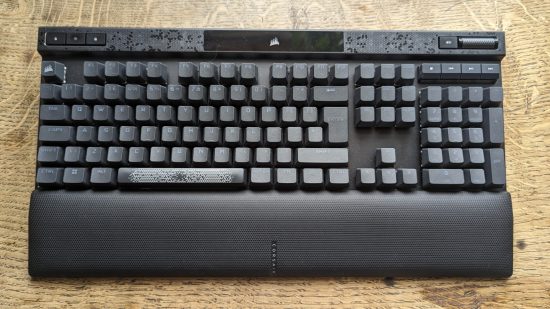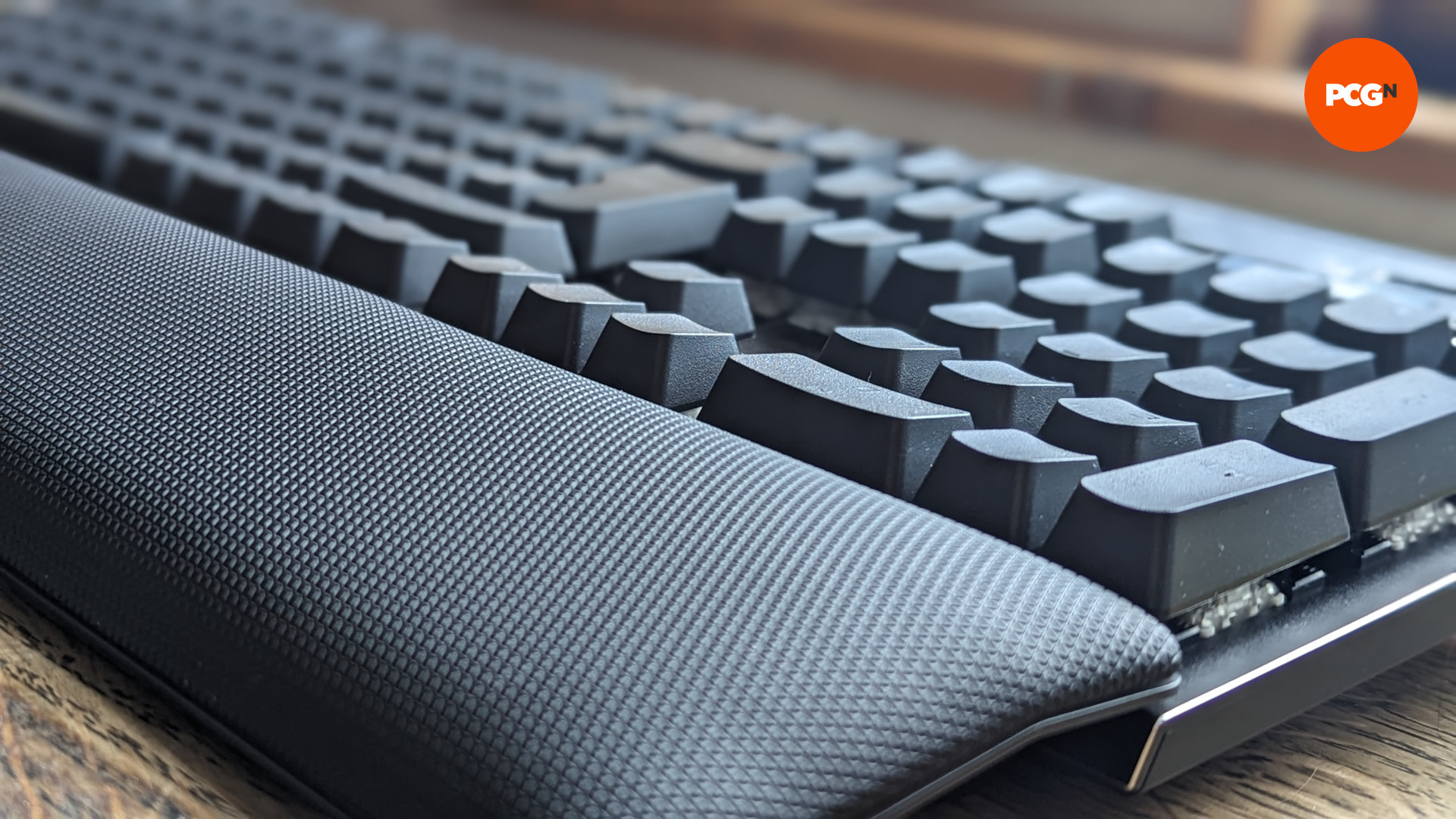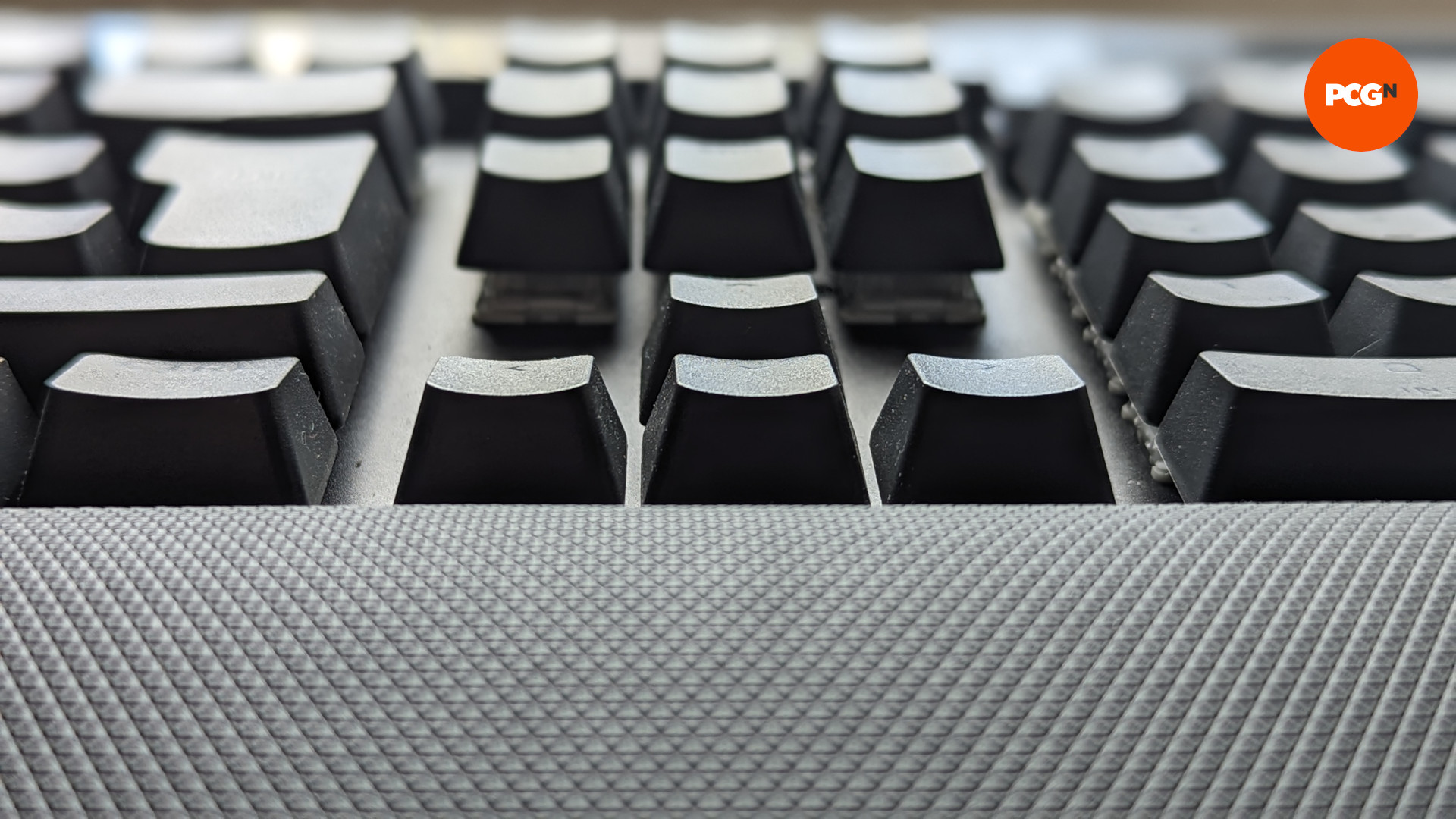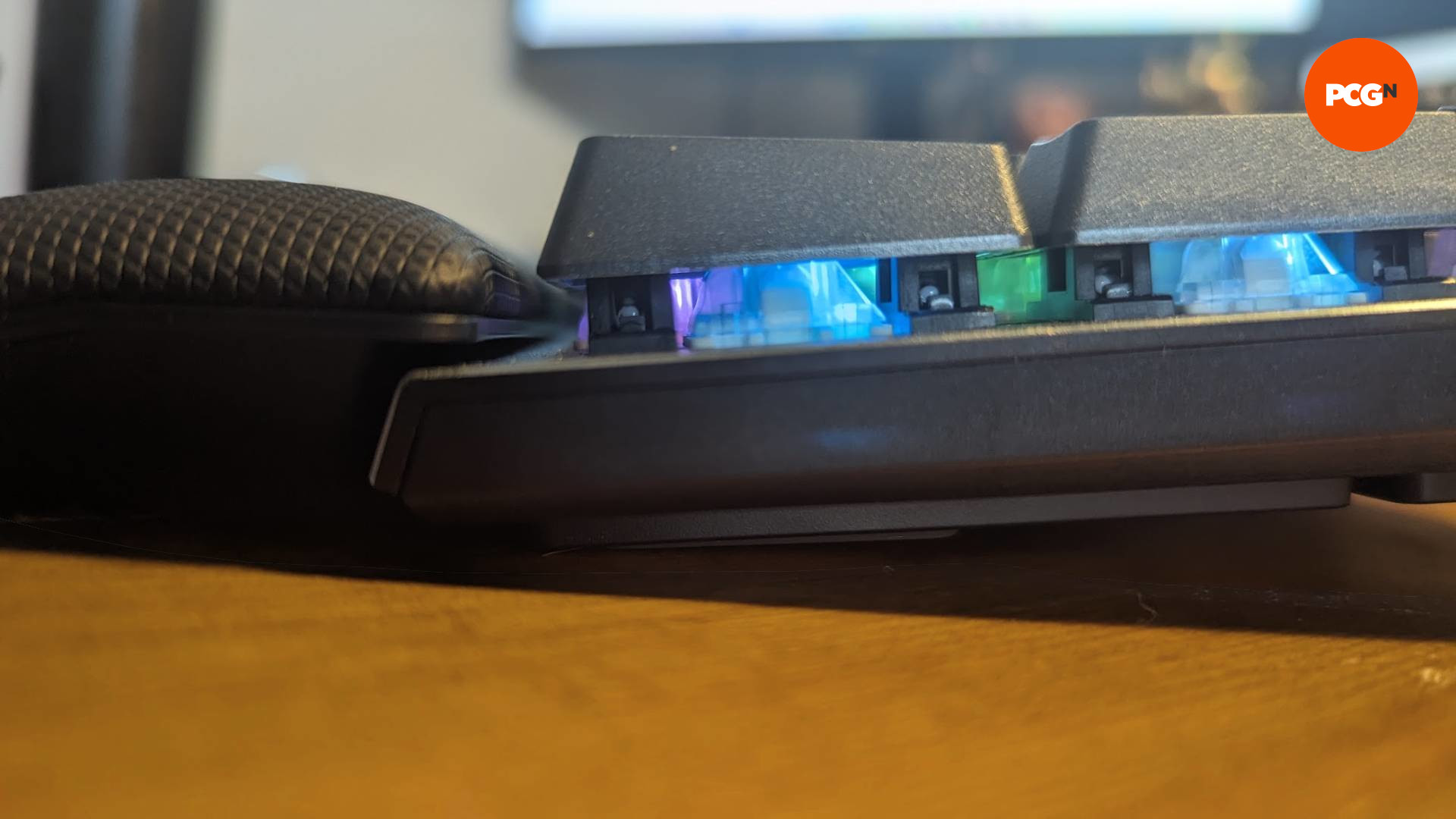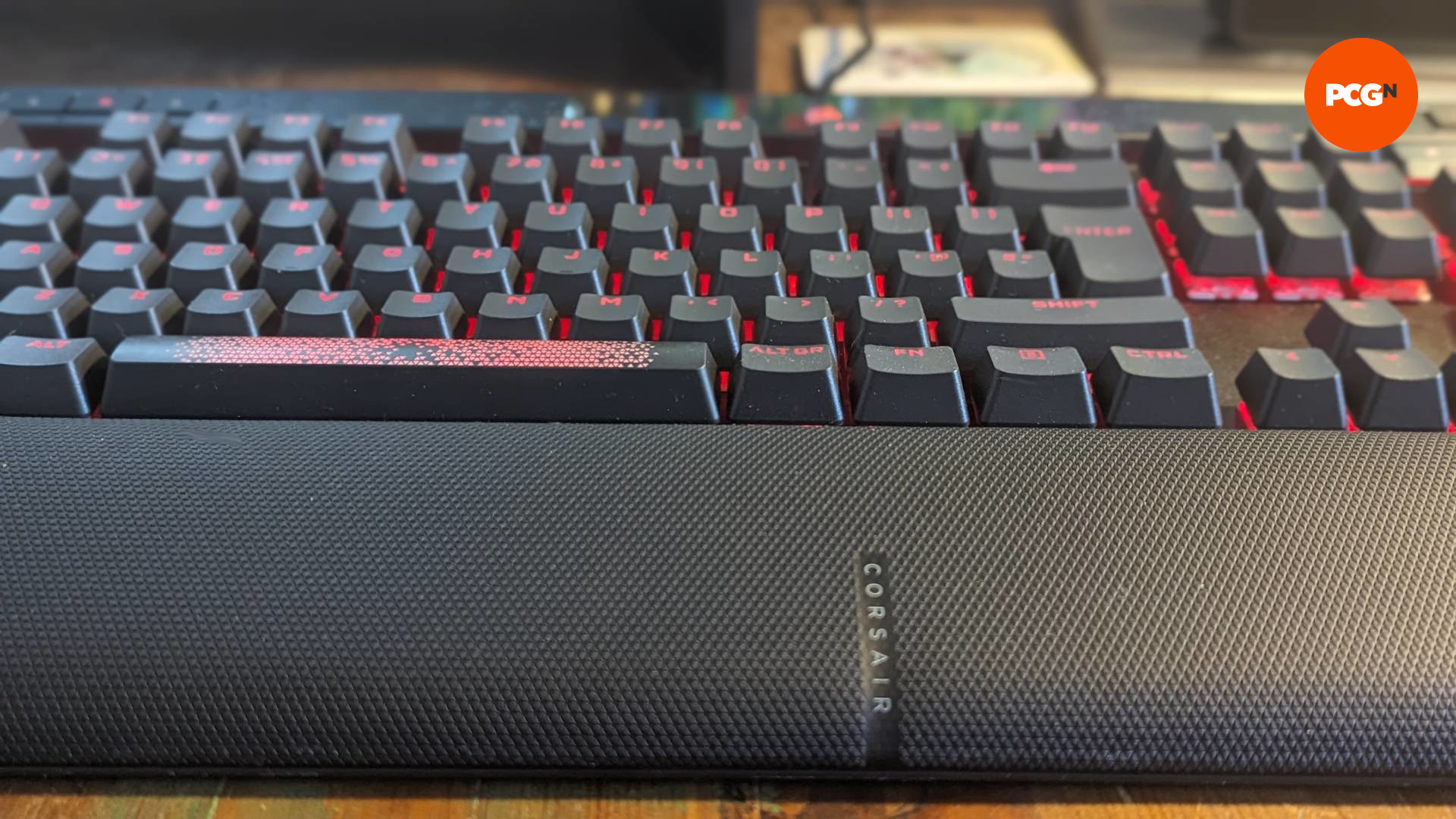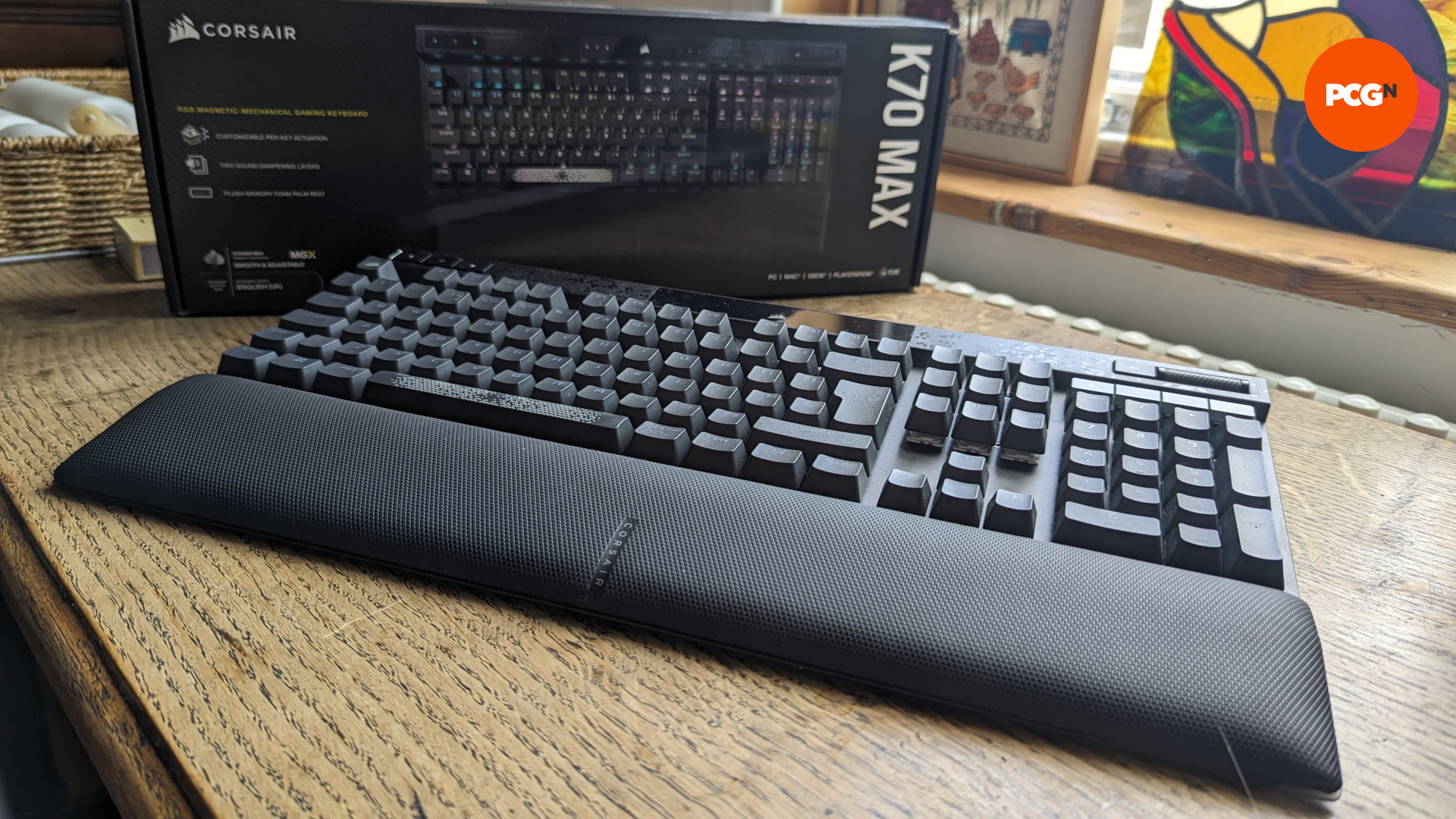Our Verdict
The Corsair K70 Max is a great gaming keyboard that feels premium and rewards your curiosity through its customization options. Unfortunately, some of its features aren't useful to everyone, and I would rather they were done away with to bring its high price down.
The Corsair K70 Max comes from a respected lineage of gaming keyboards, bringing the creditable product line to a deserved apex. It’s a real enthusiast’s keyboard, emphasizing customizability above all else. While I’d love to end my Corsair K70 Max review there, the glut of bells and whistles it boasts might be surplus to requirements for many ordinary gamers.
The K70 Max nails all the basics that you expect from the best gaming keyboards: it’s comfortable, stylish, features low latency connectivity and just plain feels great to use. It’s pretty much an ideal all-round keeb, save for one thing: price.
At $229.99 (£219.99), the K70 Max commands an enthusiast price, meaning its unique features need to go a long way to justifying its cost. That aside, there’s no denying that Corsair’s new keyboard is a lot of fun.
Corsair K70 Max design
First off, the Corsair K70 Max absolutely looks the part, and as with every area of this keyboard, oozes that premium quality. The body’s textured space gray aluminum is subtle but tasteful, with shortcut buttons in the top left, a stylish volume scroll top right, and an LED display through the middle. At the bottom of the keyboard, Corsair’s familiar memory foam palm rest attaches with minimum magnetic fuss.
At the rear, the USB Type-C charging and connection port is nested in a small nook. The included cable happily slots in here, but be wary of using another cable as it might not fit in the recess. Next to that is the ‘Tournament Switch’, a feature returning from the Corsair K70 RGB Pro. When activated, this instantly disabled all macros and shifts the keyboard to a block color mode.
Now, to the keycaps themselves. As with the chassis, each double-shot PBT keycap is pleasantly textured, making precision inputs easier as your every touch adheres to the chosen key effortlessly. Light-wise, I’ve got to admit I’m not a usually a fan of garish RGB effects that seem synonymous with gaming keyboards, but I found the K70 Max’s display to be quite attractive. At the very least, you can customize the effects to suit your taste. That’s something I’ll discuss more in the software section, but suffice to say, tinkerers will love this keyboard.
One thing to note is that the K70 Max is pretty chunky, especially when you’ve got the palm rest attached. It’s fair to say the extra buttons across the top of the keyboard come at some cost to your desk’s real estate. I didn’t find it to be an issue, but you might want to consider that factor if you’ve got limited space to work with.
Corsair K70 Max performance
The K70 Max excels at general use. Corsair’s detail-oriented approach has culminated in making it one of the most comfortable, high-performing keyboards I’ve ever used. The company has clearly had ergonomics in mind in its design of every element of the board: the gradient of the keyboard from top to bottom is just right, each individual key has a clear typeface and is perfectly spaced to avoid any wrong inputs. It’s a hefty bit of kit, coming in at 3.06lbs, but this translates to a keyboard that feels reassuringly sturdy beneath my hands with no chance of shifting unwontedly, even under the rigors of a frantic, button-mashing gaming session.
If I was to nitpick, I’d say the detachable palm rest, though comfortable, could be a bit longer for the large-handed among us. With my fingers resting on the W, A, S, and D keys while gaming, I found the pad was slightly too short to fully sit the bottom of my palm against the foam. A minor quibble, but nonetheless noteworthy.
As previously mentioned, the full swathe of extra keys across the top of the chassis return from previous K70 models. They make it easy to switch between keyboard profiles, alter RGB brightness, adjust or mute volume, as well as play, pause, and skip media keys. These functions would otherwise be several mouse clicks away and possibly necessitate switching programs, making the buttons great quality of life additions. I’m usually a bit skeptical of adding extra keys all over the place, but genuinely found some of these useful, particularly the ones to control media.
The K70 Max is a magnetic-mechanical keyboard, and as others can attest, sound can sometimes be an issue with these models. Not so with this one. Now, I could never claim that it’s silent, but its dulcet noises are a far cry from the incessant metallic clacking that accompanies many mechanical keyboards. It’s still audible, but it’s one of the least sonically obtrusive mechanical keyboard I’ve used nonetheless.
Corsair K70 Max software
The K70 Max comes hand-in-hand with iCue, Corsair’s respected peripheral software. It’s a bit more in-depth than competitors’ products, which could be intimidating, but the company has added tutorials which explain how to get the most out of the different functions. This is crucial, as there are endless opportunities to fine tune the K70 Max.
It’s in iCue that you encounter two things that set the K70 Max apart from many other keyboards: its incredible range of customization options and ultra low latency. If you want to achieve the ultrafast 8,000MHz polling rate, you need iCue, otherwise you’ll be limited to the out-of-the-box 1,000MHz as standard. I didn’t personally notice the difference in speed, but if you’re a tournament gamer where every input is vital, you’ll probably appreciate this rapid polling rate.
iCue also gives you the chance to configure key assignments, lighting effects, performance, key actuation, and tweak general settings. And there’s a lot of depth and choice within each of those areas. You can set several lighting effects to run concurrently for a kaleidoscopic light show on your keyboard, for example, or design distinct lighting profiles to switch between on the fly.
This extensive personalization can be applied to every single key, too. This amounts to more than just swapping inputs around: you can assign each key distinct lighting effects, actuation points, and macros. You can even customize the volume roller! The actuation point (how far you have to press the key in before it registers) ranges from a feather-touch 0.4mm to a robust 3.6mm in 0.1mm increments. I found 1mm to be perfectly useable in day-to-day use, and likely benefitted my Valorant sessions, where precise, quickfire inputs are a must, but I can’t say it made a massively noticeable difference.
One key feature the K70 has over its rivals is dual-point actuation, meaning you can assign keys different inputs based on how hard you press. This has various applications, and can allow each key to function similarly to a controller’s trigger button, where it enacts differing commands if you press it harder than usual, for example. This isn’t a feature I deployed all that often, but it’s there to be used if it seems useful to you.
Even if you’re not big on having to download software every time you buy a new PC peripheral, I’d really encourage you to give iCue a spin if you splash out on a K70 Max. Using it without the software is like buying a Ferrari to drive in a 20mph zone: cool but unnecessary.
Is the Corsair K70 Max worth it?
If you’re a keyboard enthusiast with a penchant for customization and $230 burning a hole in your pocket, look no further. The K70 Max is an absolutely top tier bit of kit. It’s an all-singing, all-dancing keyboard that feels great to use, providing hours of absorption for tech-heads looking for components to tinker with.
The only thing it’s missing if you’re looking for peak performance is that it’s magnetic mechanical rather than optical mechanical, a fact that leaves some small performance and durability gains on the table. If that’s important to you, the Razer Huntsman V2 is optical mechanical, and regularly sells for less than $200.
Aside from its price and lack of optical switches, there aren’t any areas that objectively detract from the K70 Max. However, that’s not to say everything it brings to the table is a hit. I found no use for the keyboard’s dual-point actuation, which isn’t to say they’re entirely useless, but more that they simply didn’t figure into my day-to-day gaming or working use. The same is true of the Tournament Swtich, as sadly for my once-budding esports career, I don’t think I’m likely to compete in a tournament any time soon.
Still, that doesn’t make the K70 Max any worse to use: it’s a fantastic gaming keyboard which feels absolutely premium, and rewards your time spent tweaking its various custom settings with a sense of satisfaction and child-like excitement.
Pros:
- Great per-key customization
- Premium design with tasteful, programmable RGB effects
Cons:
- Expensive
- Dual-point actuation isn’t that useful
Where to buy the Corsair K70 Max
The Corsair K70 Max is available directly from Corsair, and will likely pop up on third-party retailers like Amazon in the near future. We’ll be sure to update this review once listings for the keyboard go live.
